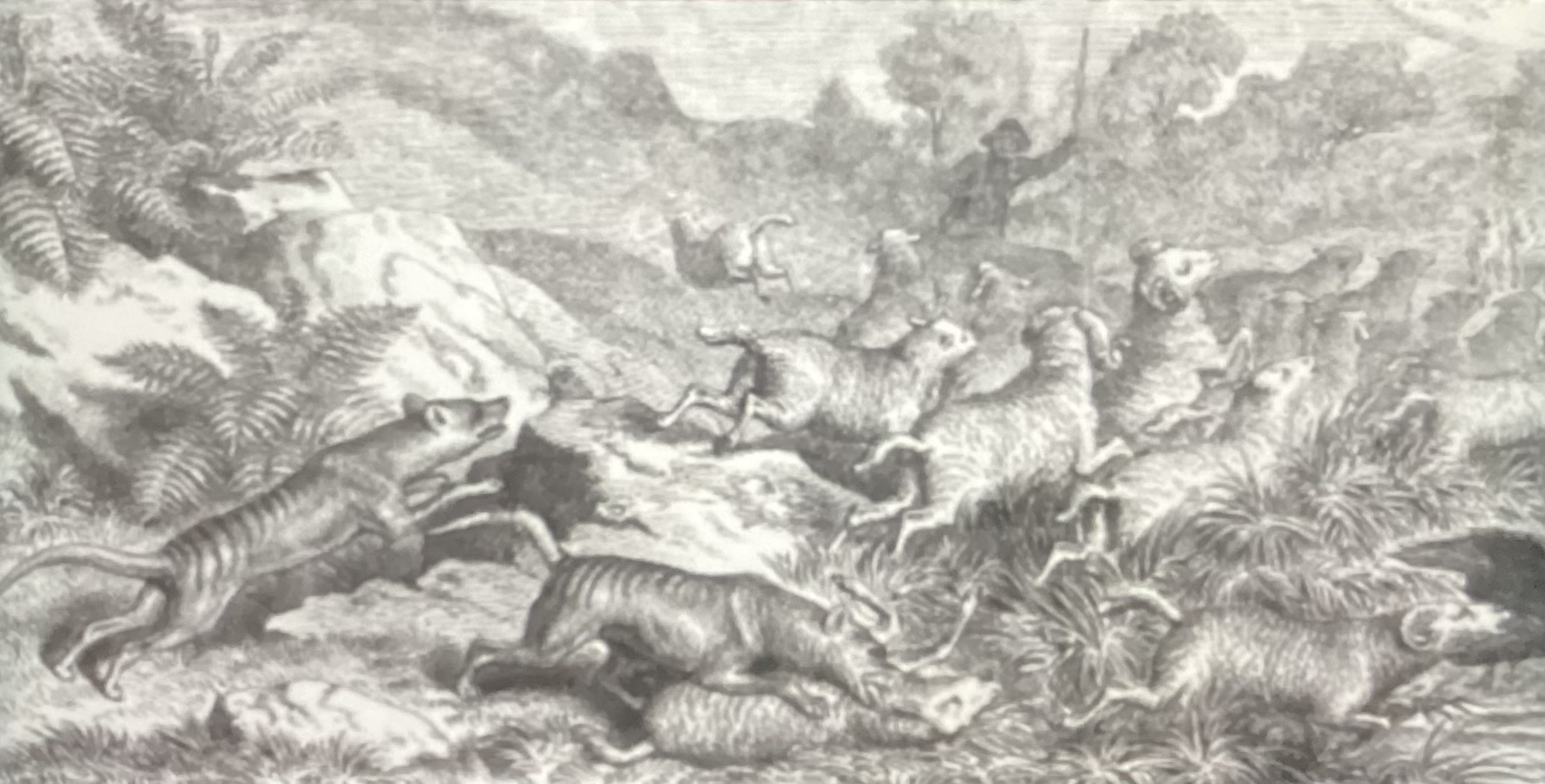Their efforts were supported and assisted by the public and the state, and were ultimately successful.

David Owen, A depiction showcasing the intrest that the early settlers had in sheep farming, and their perception of the threat the thylacine posed